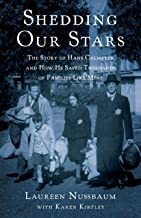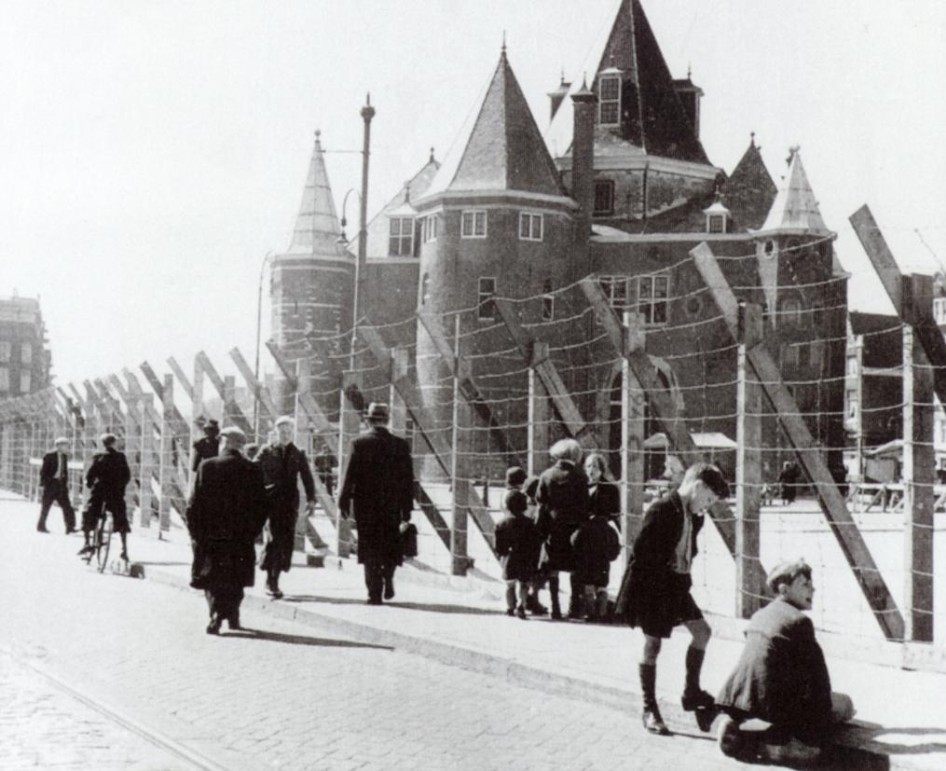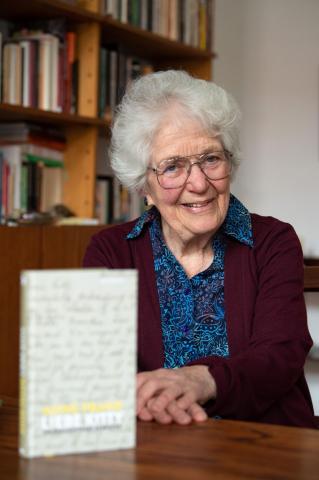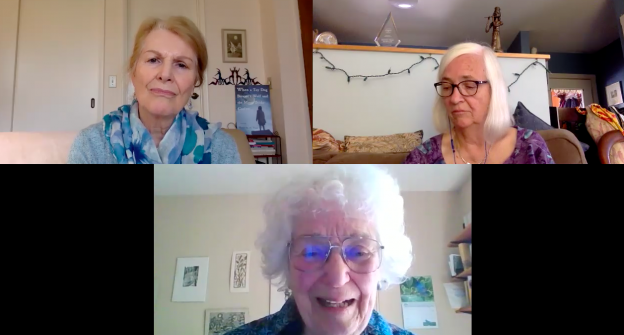A conversation can bring a whole world back to life. Thanks to technology, two eyewitnesses and a writer recently gathered to re-examine what many would call Anne Frank’s Amsterdam. Our intention was to amplify the view of the city that emerges from the Diary, through our three books and the experiences and research that underlay them. We represented three decades of human life: scholar and activist Laureen Nussbaum in her nineties, trauma therapist and speaker Hendrika de Vries in her eighties, and I, an author, activist and speaker in my seventies. We spanned the country, in Seattle, Santa Barbara, and Vermont. As we talked, the distinctions among us became clearer as well as the commonalities.
On July 6, 1942, the Franks walked across the city from the newly built Amsterdam Zuid to their hiding place in the Jordaan. Near their original home, teenager Laureen Nussbaum and her family were their neighbors and friends, but knew only that the Franks had disappeared as many people did in those days. Both families had immigrated from Frankfurt, where they belonged to the same congregation, and helped found a new one in Amsterdam.

Laureen (then Hannelore Klein) and her family anxiously awaited the outcome of their legal case to secure an exemption from deportation. They had to prove with credible but false documentation that one grandmother was not Jewish. Their lawyer assured them that they had a good chance, and he was proved right when the German official Hans Calmeyer ruled in their favor. Calmeyer is the main subject of Laureen’s 2019 book, Shedding Our Stars: The Story of Hans Calmeyer and How He Saved Thousands of Families Like Mine, which also tells her own family story.
On the other side of the city, near the Franks’ hiding place, lived little Hendrika de Vries, just four years old, whose secure “only child” world had changed on the way to visit her Jewish “uncles.” Hendrika saw a little girl just like her being dragged to a truck while she screamed for the rag doll she’d dropped in the street. Soon, Hendrika’s father would be locked away in a German labor camp as a prisoner of war, and the young child and her mother would be left to cope on their own. They would hide a Jewish teenager known only as Nel, who became an older sister to the lonely child – until Nel was captured and taken away. Hendrika’s 2019 memoir shows a little girl awakening to the perils of hatred and the possibilities of human goodness, When the Toy Dog Became a Wolf and the Moon Broke Curfew.

A few weeks after the Franks went into hiding, my parents were married on July 25, 1942, in Sussex, New Brunswick, Canada. The joy on their photographed faces still radiates almost eighty years later. My father had flat feet, so he was exempt from the draft, and Amsterdam must have seemed far away. I was their only child, born in 1948. Although I visited the city as a tourist in 1982 and was charmed by it, the Holocaust in the Netherlands didn’t grip me until a long stay in 2001, and it still hasn’t let me go. For thirteen years, I was absorbed in researching and writing An Address in Amsterdam, the story of a young Jewish woman who joins the resistance, and I have been speaking widely on related topics ever since: “Anne Frank’s Neighbors: What Did They Do?” and “Remember and Resist: Learning from the Dutch.”
As Laureen and Hendrika recounted their experiences, the world they described was intimately familiar to me, although I hadn’t lived it literally, only in a construct of the mind, imagination and heart. Empathy can only take us so far. Then respect must cause us to pull back and bow to the reality of the people who were actually there, and hear what they suffered, enjoyed and experienced. It was not, in the end, I whose Jewish uncles disappeared, nor I who trekked far into the countryside in the desperate search for food. I wanted to learn directly from these two women what they had lived through and what had kept them going, and how they were coping in the complex world we are living in now.
Listening to them speak, I heard a communion between them, divided as they were by age (15 and 4), and classification by the state (daughter of a “mixed marriage”, and a Gentile). Even so, their experiences converged: the disappearances of people they loved, the complexities of helping people in hiding, the joyous times despite all the awful ones, eating tulip bulbs during the Hunger Winter. Then there were the contrasts between them. On the one hand, the once happy little female household of Nel, Hendrika and her brave mother was rent asunder when they were betrayed. On the other hand, imagine the immense relief of Laureen’s family when Calmeyer ruled in their favor, and the girls could shed their stars and return to “regular” school from the Jewish school they had been forced to attend.

Looking from one woman to the other, and reading the full transcript of our conversation again and again as I edited it, I reflected on the two lives they brought to light. Even in the ten or so years I’ve known her, Laureen has done so much for the world, traveling even in her nineties to Germany to help launch the 2019 version of Anne Frank’s Diary, speaking tirelessly to distinguished audiences and schoolchildren, committing herself to the historical accuracy and literary quality of my book and who knows how many others. In her late eighties, she didn’t take no for an answer from the publishing world when her translated biography of Calmeyer didn’t find a home. Instead, she rewove the story to include her personal experience as well as his, found a new publisher, and promoted the book. And yet Laureen feels that she hasn’t done enough, like Calmeyer who wrote “Too little! Too little!” of his own efforts. Perhaps that is the fate of everyone who was relatively free and of at least teen age during the Holocaust.

In contrast, Hendrika was a child, and therefore exempt from the feeling that she should have done more at the time. Despite the shattering of her childhood world, she had an admirable model in her mother, whose seven (!) older brothers had made sure she could box and take care of herself. She also had the broadest view of our collective investment in each other’s freedom, which Hendrika absorbed. When her mother was challenged for risking the life of her own child to save another, the response was ““No child is safe unless all children are safe.” Because Hendrika suffered trauma after trauma, she had to find her own path as an adult through analysis and depth psychology, and then turned back to show others the way. After seeing the neo-Nazis in Charlottesville, she knew she had to tell her own story and speak up against hatred.

Listening to these two remarkable women, I felt somewhat as Hendrika describes feeling as an only child when Nel entered her life: as though I’d been given older sisters to guide me, older sisters who had lived what I merely researched. Laureen has been a priceless friend and resource for years. It fell to me to bring her and Hendrika together, and to help show how their two books make a new map of Amsterdam – as experienced by a determined Jewish teenager with an exemption from deportation, and by a Gentile little girl who had lost her daddy but gained a Jewish older sister, at least for a while.
When our interview is published, I’ll put the link here.

